Man overboard!
A stated goal of Science Sets Sail is to put researchers into a whole new environment where they can approach scientific ideas in new ways. A ship is perfect for this – there is no escape! But before you can start thinking, you first need to learn how to navigate the ship. Regine Oyntzen tells us about ship security and emergency procedures, as seen by a non-expert.
Emergencies never happen? Well, on leg 1 of Science Sets Sail, we received two mayday calls where the Thor Heyerdahl was the closest vessel, and so we had to help. The first call was about a broken mast on a small sailing vessel – we had to stay close by. For this, the duty watch had to reduce sail. The second call was about a grounded sailing vessel. Here, we had to get our rescue boat in the water (which is really hard work), and some members of our crew went to out, trying to refloat the boat. It didn’t work and later the coast guard took over. You see – you need to be prepared for emergencies. And for this, nothing is better than practice, practice, practice.
7x short, 1x long – general alarm

If you hear this alarm on board, it means there is an emergency – fire, leakage, sinking, person over board. So you have to grab your life jacket stored nearby your bed, come on deck, and then put it on (no, not while you are climbing the narrow stairs…).
Our special exercise: Person overboard (PoB for short)
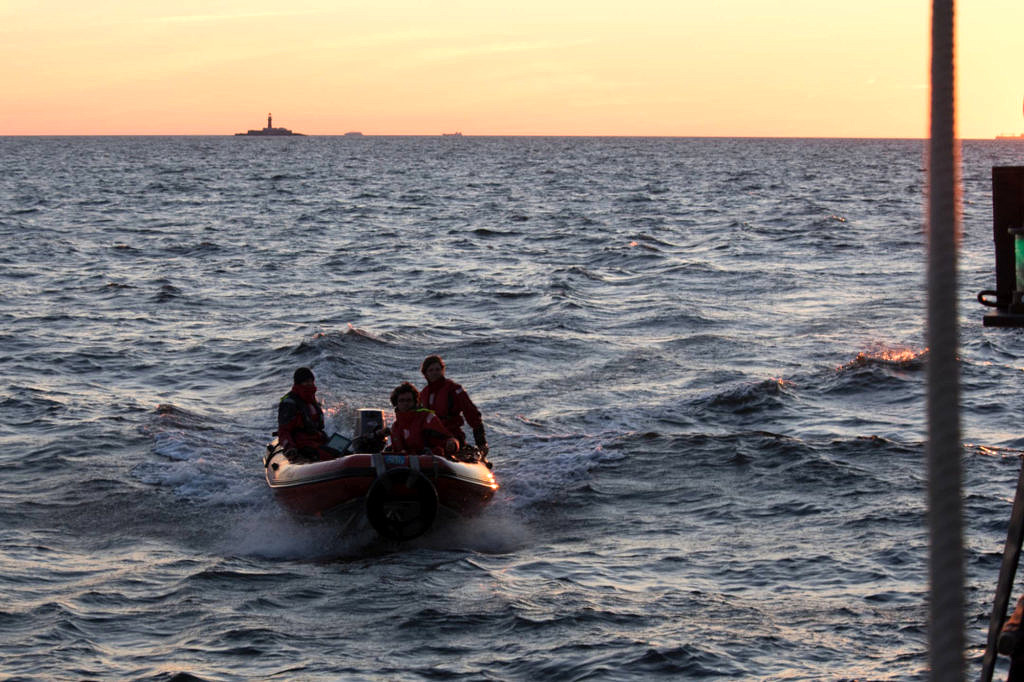
If somebody falls overboard, you have really to be quick to rescue him or her. On our sailing ship, there are several possibilities to do that. We practiced with the rescue boat and with a ‘jump man’. The crew practices regularly – and sailing newbies like us try to support them.
Very important: team work. But be careful!

In this exercise, our person over board – Martin Gronemann – was also in the rescue boat from the beginning, because the captain was interested in how long it took us to get the rescue boat into the water and how to get him – secured on a litter – back onboard again.
How can I help you?
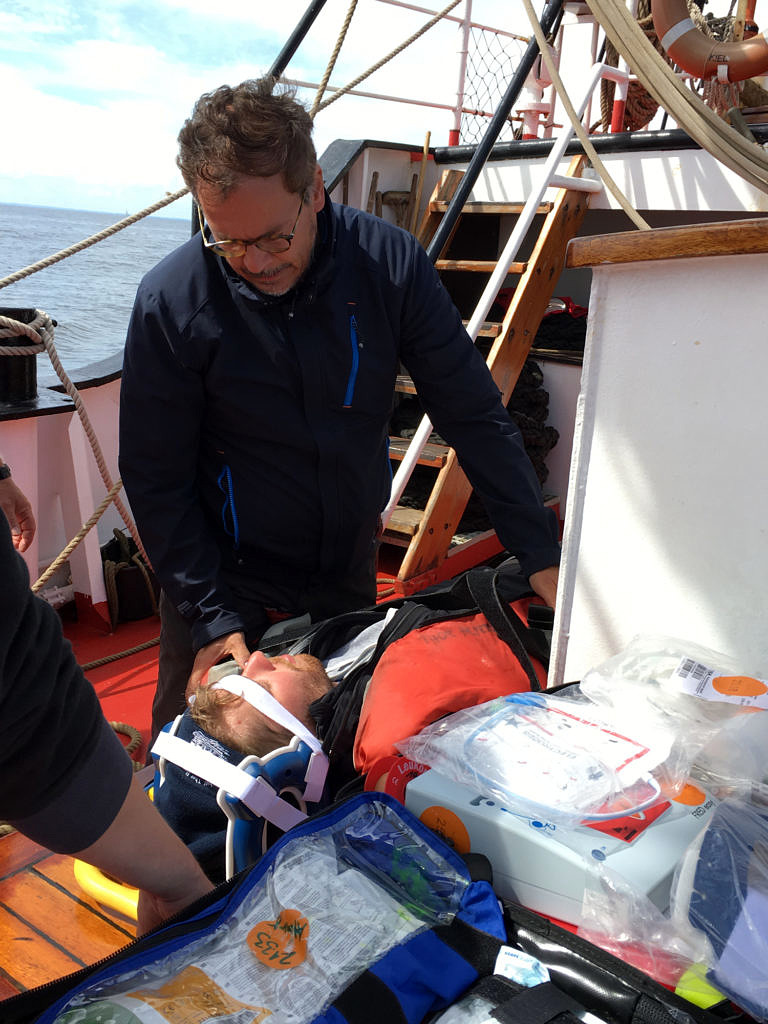
After heaving him on board, carefully we had to check if there are any injuries (which was of course not the case this time!).
First dressing, then jumping
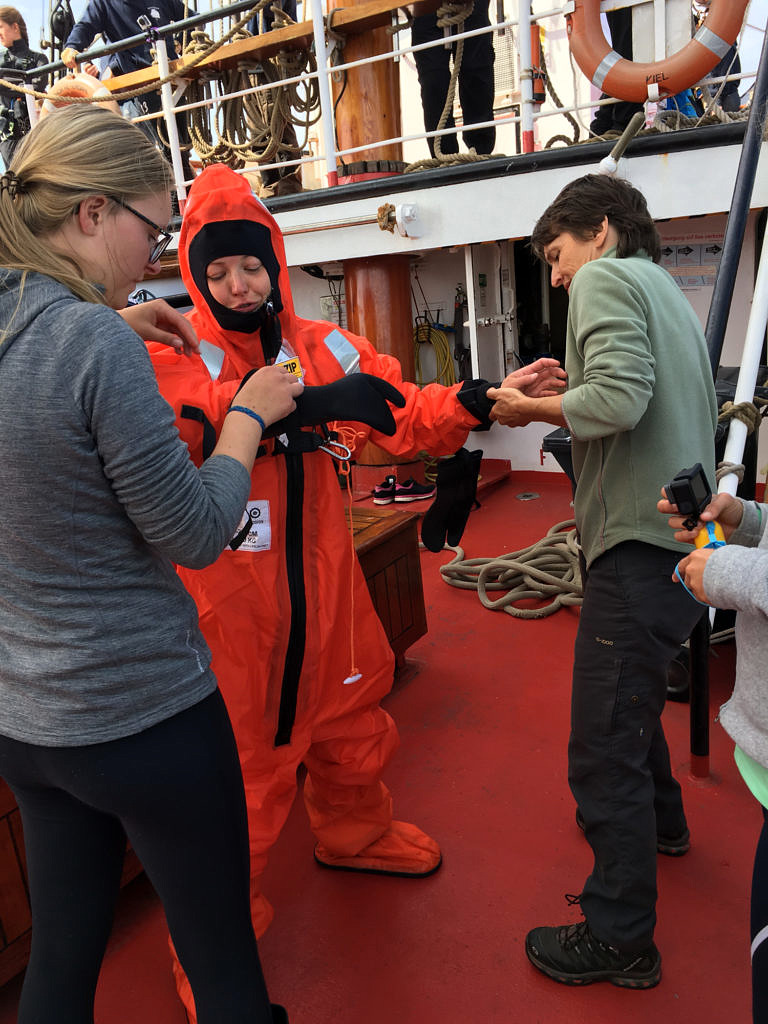
For the second exercise, a volunteer – Vanessa Roden – got into a survival suit – to ensure that the exercise doesn’t turn into a real emergency. We carefully checked if there is still any possibility for water to get inside while she was floating and swimming away from the ship until she can be rescued.
Like travelling to the moon
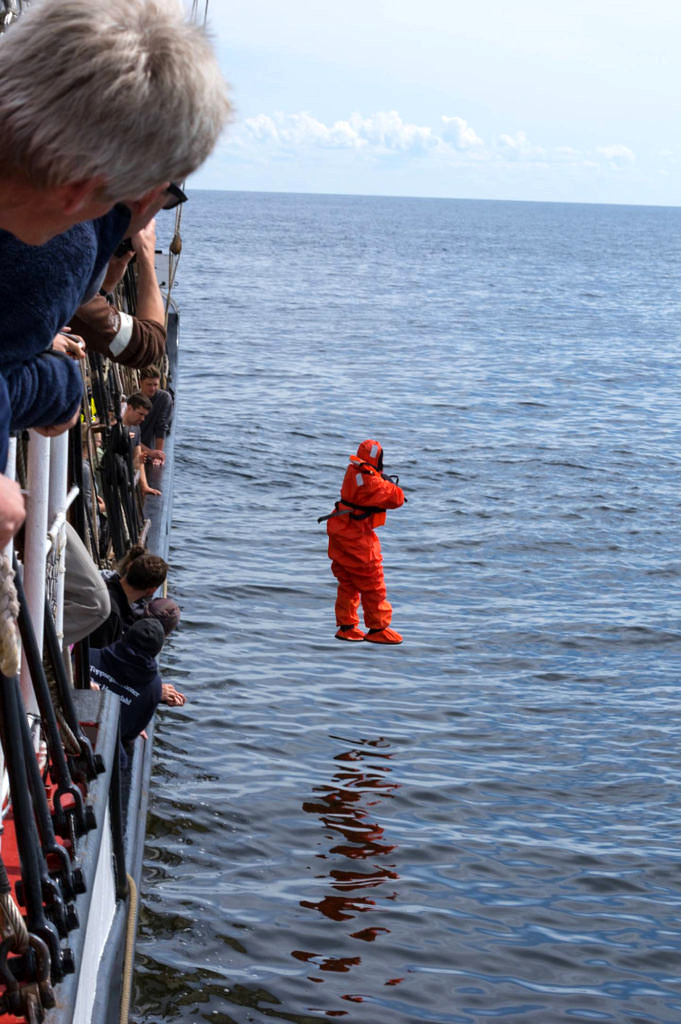
After being dressed, our PoB was prepared to travel to the moon, oops, no, to jump into the water from the deck. On this sunny day, the others onboard considered swimming themselves – although the water was only 16 degrees.
Jump man in action
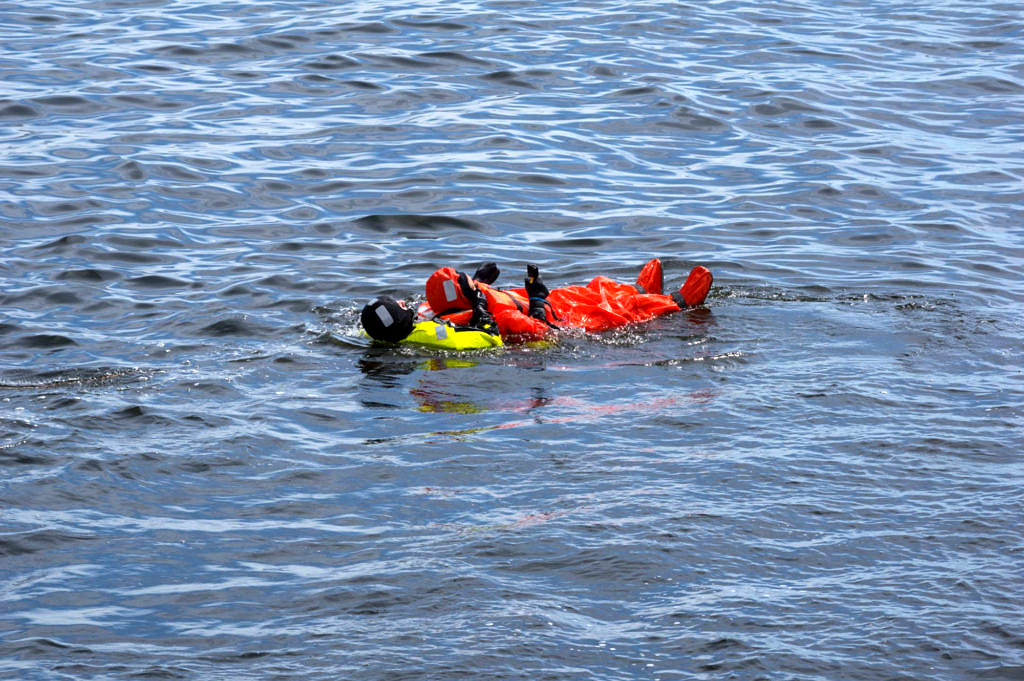
This time a jump man (a crew member who has had special training) – also in survival suit and equipped with glasses, snorkel and flippers – is secured with a rope to the ship, grabbed the person in the water with a special rescue belt and brought her back.
Well-known by scientists: evaluation
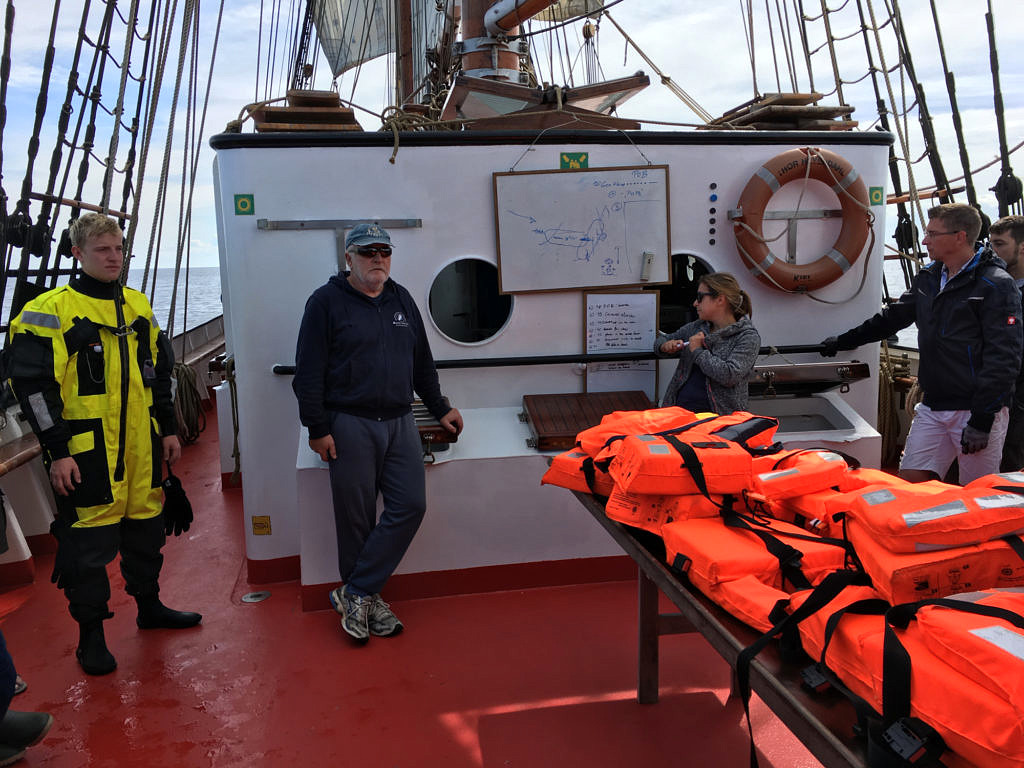
Very important, at the end – and well known by scientists – comes the evaluation. How long did the maneuver take? What were the problems? What worked well?
Nearly finished: drying the rescue equipment
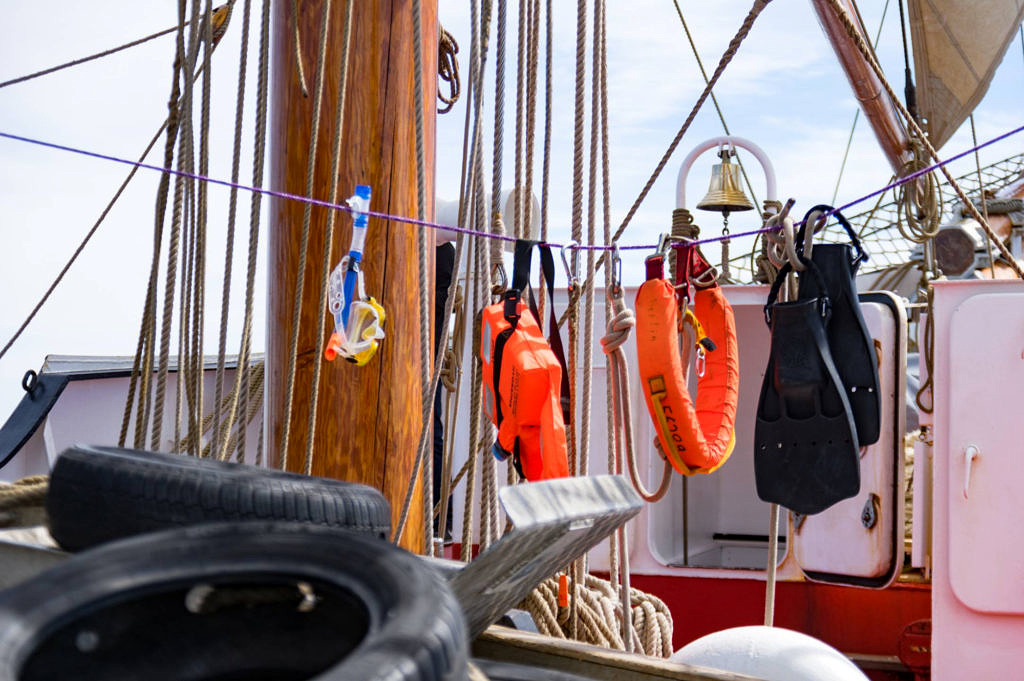
After having practiced everything, all rescue equipment had to be dried and packed away.
And finally: jumping in the water just for fun!
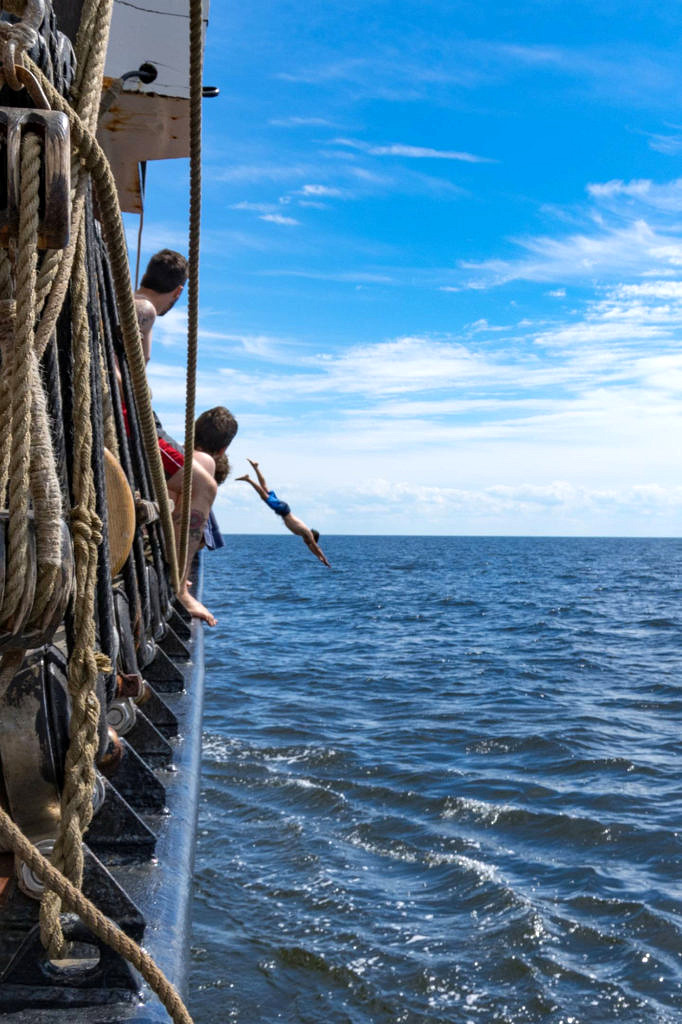
Yes, even in summer the water in the Baltic See is not particularly warm and you have to jump from 3 metres above the water. But it was a great experience!
